Die Alone (2024)
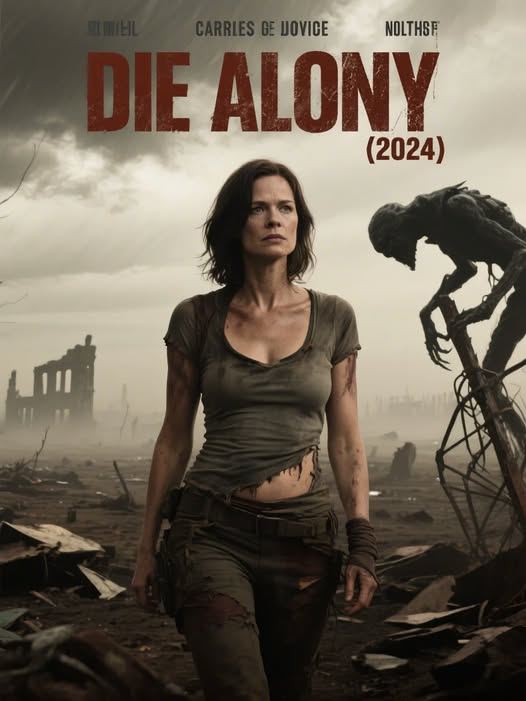
Die Alone (2024) is a post-apocalyptic horror film directed by Lowell Dean, blending elements of mystery, psychological drama, and emotion to create a unique cinematic experience. Featuring notable actors such as Carrie-Anne Moss, Douglas Smith, Frank Grillo, and Kimberly-Sue Murray, the film has garnered praise for its innovative storyline and compelling performances. Die Alone stands out in the zombie genre with its creative approach, focusing on personal stories and dark secrets rather than relentless action sequences. Below is a detailed analysis of the plot, characters, themes, and standout elements of the film.
Setting and Main Plot
The setting of Die Alone is a post-apocalyptic world ravaged by a mysterious virus that has transformed most of humanity into terrifying plant-human hybrids. Unlike traditional zombies, these creatures are a bizarre fusion of human and plant, with bodies covered in vines, roots, and green sprouts. They move slowly but are deadly, exuding a haunting beauty mixed with horror, creating a unique visual that sets the film apart from other zombie movies. The world is a desolate landscape of dense forests, ruined cities, and small survivor communities struggling against extinction.
The protagonist, Ethan (played by Douglas Smith), wakes up after a car accident with temporary amnesia. He cannot recall his past, only knowing that he is desperately searching for his girlfriend, Emma, who disappeared after the crash. Ethan carries a sense of despair and an obsession with finding Emma, though his memories of her are fragmented. During his survival journey, Ethan meets Mae (Carrie-Anne Moss), a strong, enigmatic survivor who seems to know more than she reveals. Mae agrees to help Ethan find Emma, guiding him through dangerous territories filled with plant-hybrid monsters and hostile survivor groups.
The story unfolds through two timelines: the present, where Ethan and Mae navigate the post-apocalyptic world, and the past, revealed through flashbacks that gradually restore Ethan’s memories. This non-linear storytelling heightens the suspense and keeps viewers piecing together the puzzle of the narrative.
Character Development and Relationships
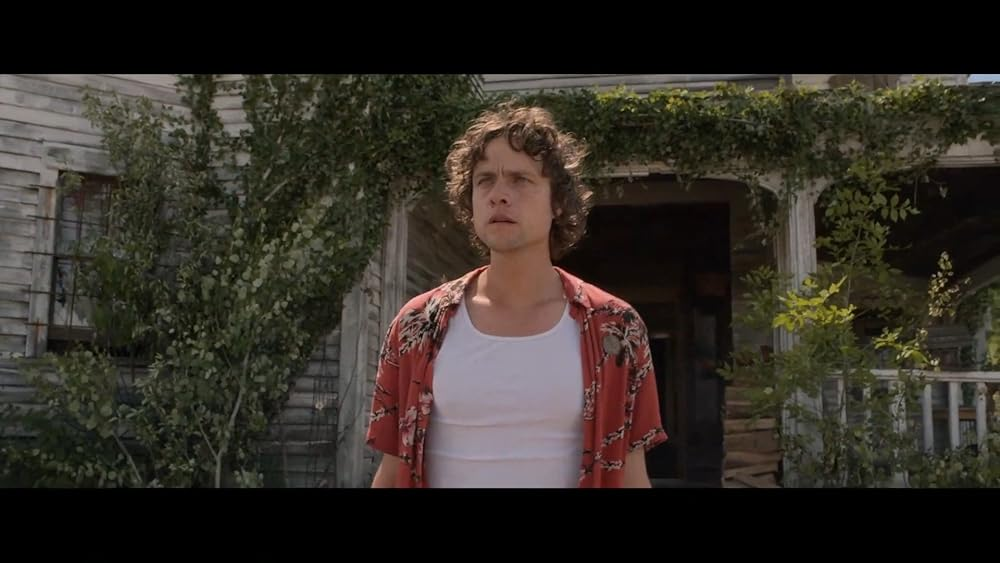
Ethan
Ethan is a complex character, both vulnerable and resilient. He is an ordinary person thrust into a harsh reality, grappling with loss and the fear of losing his humanity. As his body begins to show signs of infection—such as patches of moss or small vines growing on his skin—Ethan struggles to maintain his sanity and hope. Douglas Smith delivers a compelling performance, portraying Ethan as both sympathetic and determined, making it easy for audiences to connect with him.
Mae/Emma
Mae, portrayed by Carrie-Anne Moss, is the heart of the film. She is a seasoned survivor with a tough exterior that conceals deep emotional wounds. Mae hides a major secret: she is, in fact, Emma, Ethan’s girlfriend. This revelation comes as a major twist in the second half of the film, when Ethan discovers that Mae changed her identity to protect him from a painful truth. Emma has been infected with the virus for a long time and is trying to preserve Ethan’s humanity by feeding him human flesh, rumored to slow the transformation process. Carrie-Anne Moss delivers an emotionally charged performance, especially in scenes confronting Ethan, where she balances love with the harsh reality of their situation.
Supporting Characters
- Frank Grillo plays a ruthless leader of a survivor group, appearing in key scenes. Despite limited screen time, Grillo’s character leaves a strong impression with his menacing presence.
- Kimberly-Sue Murray portrays another survivor connected to Mae, helping to shed light on her past.
The relationship between Ethan and Mae/Emma is the core of the story, built on love, sacrifice, and difficult choices. The film is not just about survival but also about how people confront loss and strive to protect what matters most.
Key Plot Points and Twists
Die Alone uses twists to keep audiences engaged. Some critical plot points include:
- The Virus’s Secret: The virus not only turns humans into monsters but also alters memory and perception. Ethan gradually realizes that his memories of Emma may have been distorted, leading him to question reality.
- Mae’s True Identity: The biggest twist is that Mae is Emma. She has been infected and is in the final stages of transformation but continues to protect Ethan by hiding her identity and guiding him away from danger.
- The Final Sacrifice: In the film’s climax, Ethan discovers that Emma/Mae has been using human flesh to keep him alive, an act both horrifying and a testament to her deep love. As they face the reality that neither can escape the virus, Emma makes a sacrificial choice to save Ethan, leading to an emotionally powerful ending.
Style and Standout Elements
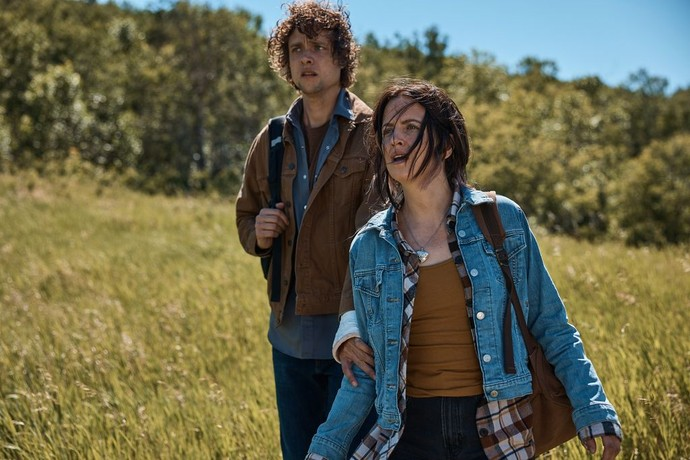
- Creative Monster Design: Unlike traditional zombies, the plant-human hybrids in Die Alone are a unique highlight. Designed with details like vines wrapping around bodies, roots piercing skin, and hollow yet haunting eyes, they are both terrifying and symbolic, representing nature’s invasion of humanity.
- Atmospheric Tone: Filmed in Saskatchewan, Canada, the movie features dense forests, crumbling cities, and gray skies, creating a bleak, immersive post-apocalyptic setting. The score by Matthew Rogers enhances the tension and emotional depth.
- Impressive Acting: Carrie-Anne Moss delivers a standout performance, balancing strength and vulnerability. Douglas Smith excels as Ethan, particularly in emotionally charged flashback scenes. Frank Grillo, though brief, leaves a mark with his natural intensity.
- Deep Themes: Die Alone is more than a horror film; it explores themes of love, sacrifice, human nature, and what it means to remain human in the face of annihilation. The story of Ethan and Emma/Mae questions how far people will go for those they love.
Technical and Artistic Analysis
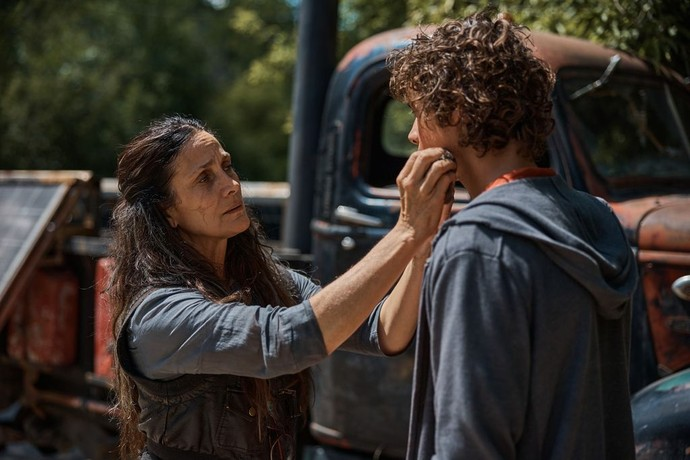
- Direction: Lowell Dean, known for WolfCop, brings a distinctive storytelling style, blending horror with psychological depth. He uses close-up shots to highlight character transformations and wide shots to emphasize the desolate world.
- Screenplay: The script is tightly written, with carefully arranged plot points that keep viewers guessing. However, some may find the pacing slow in the first half, as the mysteries unfold gradually.
- Cinematography and Sound: The film employs dim lighting and a cold color palette to create a moody atmosphere. The special effects, particularly the monster designs, are meticulously crafted, delivering realism without over-relying on CGI.
Overall Evaluation
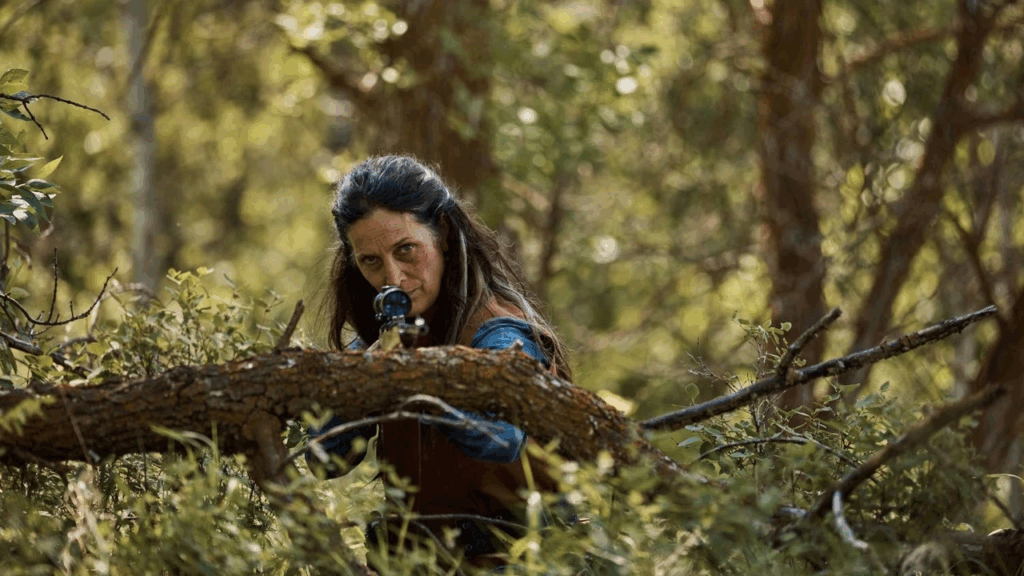
Die Alone (2024) is a must-watch post-apocalyptic horror film, especially for audiences who enjoy character-driven stories and unexpected twists. While it lacks high-octane action, it compensates with a rich, emotional narrative, strong performances, and a detailed post-apocalyptic world. The slower pacing in some sections may test the patience of some viewers. If you enjoy films like The Girl with All the Gifts, Memento, or The Last of Us, Die Alone is a compelling choice.